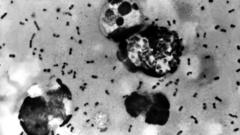In an ambitious new genetic study, researchers have mapped a comprehensive timeline of human diseases that have impacted populations across ancient Europe and Asia over the past 37,000 years. As the world braces for potential future pandemics, understanding the past proves to be increasingly vital. Many recent pathogens, including SARS-CoV-2, Zika virus, and H.I.V., have underscored the need for historical insight into disease.
Despite the efforts of historians like Thucydides, who documented the plague of Athens in 430 B.C. with vivid detail, the exact pathogens behind ancient plagues remain elusive. However, a breakthrough in genetics has enabled scientists to extract and analyze DNA from human remains, facilitating a deeper understanding of historical disease occurrences.
On July 9, 2025, a team of dedicated scientists announced the publication of their expansive study, revealing the rise of 214 different diseases, including hepatitis B and Helicobacter pylori, found in ancient remains. Their research analyzed the remains of 1,313 individuals, which allowed them to track not only the earliest appearances of these diseases but also the rise and fall of various epidemics over millennia.
The team’s findings provide critical insight into how diseases evolved and affected ancient populations. Researchers found that hunter-gatherers harbored a variety of pathogens in their skeletons, emphasizing the long-standing relationship between humans and infectious diseases.
This genetic timeline serves as both a history lesson and a crucial resource for modern-day public health preparations. As scientists continue to uncover more about the vast tapestry of human diseases, they shine a light on pathways for combating future health crises.











